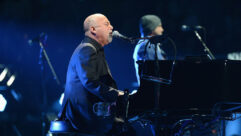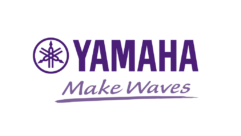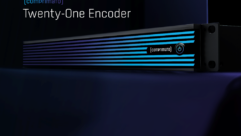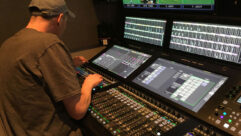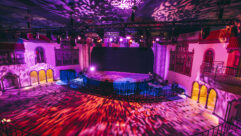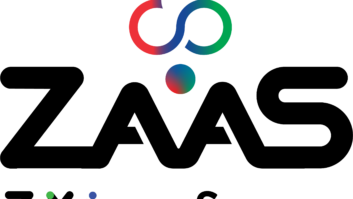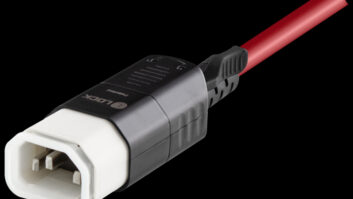Remote cheering app could boost atmosphere in Japan’s empty stadiums, as demonstrated (sort of) by this video
This week Yamaha announced a plan to put fans back in the stadiums for major sporting events this summer—virtually, at least. The company’s new smartphone application Remote Cheerer, is designed to allow sports fans to cheer from home in a way their teams can hear in the stadium. MORE@ARSTECHNICA
WHY THIS MATTERS: The sound is then imaged to sections of the stadium; the Ars story has a little more on how.. -Cynthia Wisehart
Here’s the full story from Yamaha’s announcement:
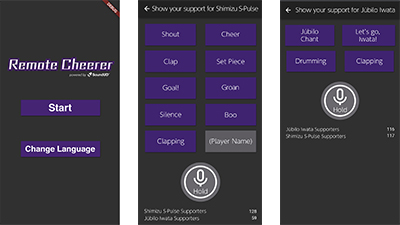
Cheering for players is an essential part of sports like football, baseball, and rugby. The passionate screams of fans constantly inspire players and even affect their performance on the field. However, with the current spread of COVID-19, many sporting events around the world have been subjected to heavy restrictions or even suspended.
In response to the current situation, Yamaha recently collaborated with two top professional football clubs in Japan and used a large stadium which seats 50,000 to conduct a field test of a new system.
The system, “Remote Cheerer powered by SoundUD” allows fans and supporters watching a game via TV, radio or live streaming to passionately support the players by sending cheers to an event venue from the comfort of their home or other remote location.
By just tapping buttons on a smartphone application, cheering is delivered via speakers placed around the venue, and viewers can choose the area from which their audio is delivered. This allows users to send their support as if they were right there in the stands behind the goal.
While the system has potential applications for a variety of situations, testing was done with spectatorless matches in mind. System usability was tested by placing a total of 58 speaker units around the stadium and having users in multiple remote locations use smartphones to send cheers, applause, booing, etc., in addition to clapping along with club chants.
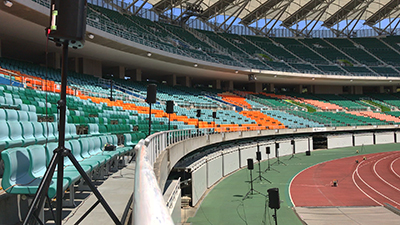
This was the first time the system was used at an outdoor venue, and users were able to gain a sense of being present at the venue, even with it being a massive stadium. The field test was able to verify the usability of the system as a means of supporting teams in competition while removing the associated risk of infection, and demonstrated the ability to create a spectator atmosphere similar to that of a real match by using separate audio transmission zones for each club without interfering with existing venue facilities, announcements, etc.
Yamaha will continue development and promotion of the system in order to contribute to creating an environment in which people can watch sporting events safely and with ease of mind during both normal and unprecedented circumstances such as these.
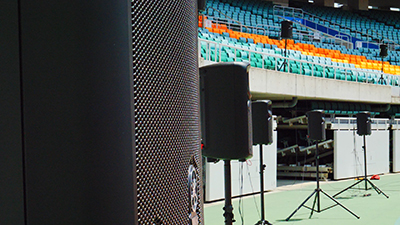 We are working to promote this system as a means of delivering cheering and fan support in a wide variety of situations. This includes not only spectatorless matches, but also matches with reduced spectator seating or where shouting is not possible, as well as accommodating fans who can’t attend matches due to being hospitalized, busy taking care of children, etc. We look forward to continuing to work with not only league, club, and stadium personnel, but also with players, supporters, and fans as well in order to further improve the system and service.
We are working to promote this system as a means of delivering cheering and fan support in a wide variety of situations. This includes not only spectatorless matches, but also matches with reduced spectator seating or where shouting is not possible, as well as accommodating fans who can’t attend matches due to being hospitalized, busy taking care of children, etc. We look forward to continuing to work with not only league, club, and stadium personnel, but also with players, supporters, and fans as well in order to further improve the system and service.
Those involved in the field test practiced proper social distancing, wore masks, washed their hands often, and disinfected all equipment thoroughly. In addition to the above infection prevention measures, testing was conducted by as few staff as possible from organizations located in Shizuoka only to minimize travel between prefectures.
Remote Cheerer powered by SoundUD
Today, people have more and more opportunities to tune in to live concerts, sporting events, lectures, and more remotely via not only TV and radio, but also live streams, public viewings, and so on. However, it is impossible for these viewers to deliver their passionate vocal support directly to the venue from the comfort of their home or remote viewing location.
This system and its new patent-pending technology are being developed in order to resolve this very issue. People who can’t attend events due to being hospitalized, busy taking care of children, living overseas or far away, etc. can use compatible apps to deliver their own cheering and support via speakers placed at the venue.
By using SoundUD* technologies, the system can easily make events more interactive via functionality that includes allowing only those viewing a live broadcast to participate in showing their support, delivering viewer-only content or services in conjunction with a broadcast, changing the content of signage at a venue in response to audio sent by users, and more.
- *SoundUD is a combination of technologies promoted by the SoundUD Consortium (administered by Yamaha Corporation) with the aim of making universal design for sound a reality. Compatible apps can be used at SoundUD-enabled spots to easily access a variety of information relevant to that space in response to sound, location, etc. The OMOTENASHI GUIDE app (available from the Aerial Acoustic Communications Association) uses SoundUD technologies to help guarantee information accessibility by providing information in multiple written languages for those who may not understand announcements and other audio spoken in Japanese.
Comment by Hiromi Yanagihara, Business Strategy Division, JUBILO CO., LTD.
With the possibility of spectatorless matches and restrictions on cheering in mind, I feel that this system will encourage players on the field by making them feel like their fans and supporters are nearby. This technology is revolutionary for fans and supporters as well, as it allows them to root for their club’s players. Our club looks forward to further collaboration in order to be able to implement the system at future events.
Comment by Junpei Takaki, Sales Division, S-PULSE CO., LTD.
The shouts of the fans are an essential element of the match atmosphere. As a former professional football player myself, I know how emboldening the support of the fans is to the players on the field. S-Pulse is eager to continue to make the most of the club’s resources in order to assist with the development of this system.
Comment by Keisuke Matsubayashi, Sales & Planning Division, Ogasayama Sports Park ECOPA
At one point during the system field test, I closed my eyes and it felt like the cheering fans were right there in the stadium with me. That’s when I knew that this system had the potential to cheer players on even in a stadium of this size.


